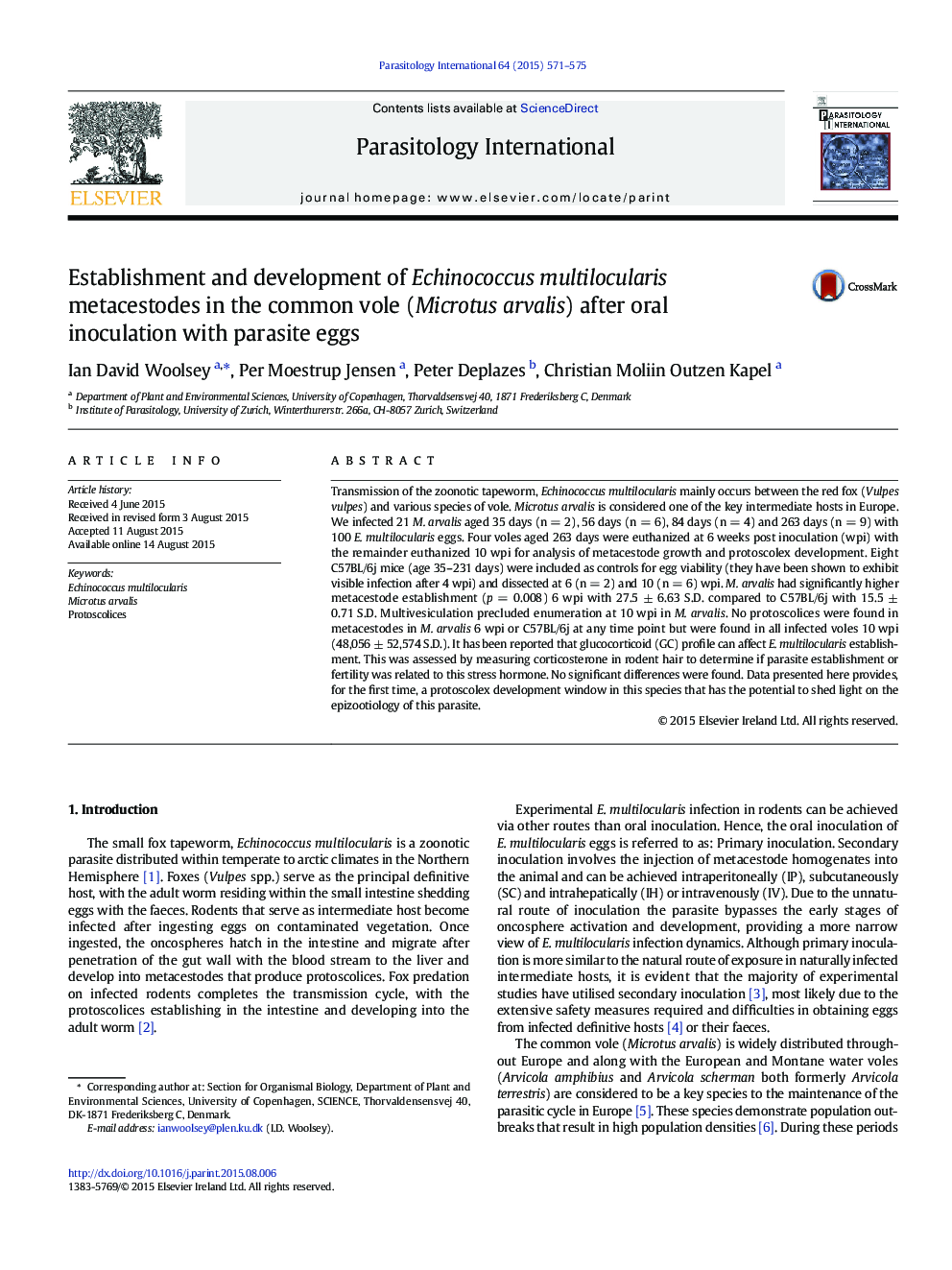| کد مقاله | کد نشریه | سال انتشار | مقاله انگلیسی | نسخه تمام متن |
|---|---|---|---|---|
| 3417778 | 1225471 | 2015 | 5 صفحه PDF | دانلود رایگان |

• We orally infected Microtus arvalis with 100 viable Echinococcus multilocularis eggs.
• We examine metacestode development at 6 and 10 weeks post infection (wpi).
• No protoscolices developed 6 wpi but infected voles had fertile metacestodes 10 wpi.
• Large range in protoscolex production between individuals
• Provides for the first time a protoscolex development window in this species
Transmission of the zoonotic tapeworm, Echinococcus multilocularis mainly occurs between the red fox (Vulpes vulpes) and various species of vole. Microtus arvalis is considered one of the key intermediate hosts in Europe. We infected 21 M. arvalis aged 35 days (n = 2), 56 days (n = 6), 84 days (n = 4) and 263 days (n = 9) with 100 E. multilocularis eggs. Four voles aged 263 days were euthanized at 6 weeks post inoculation (wpi) with the remainder euthanized 10 wpi for analysis of metacestode growth and protoscolex development. Eight C57BL/6j mice (age 35–231 days) were included as controls for egg viability (they have been shown to exhibit visible infection after 4 wpi) and dissected at 6 (n = 2) and 10 (n = 6) wpi. M. arvalis had significantly higher metacestode establishment (p = 0.008) 6 wpi with 27.5 ± 6.63 S.D. compared to C57BL/6j with 15.5 ± 0.71 S.D. Multivesiculation precluded enumeration at 10 wpi in M. arvalis. No protoscolices were found in metacestodes in M. arvalis 6 wpi or C57BL/6j at any time point but were found in all infected voles 10 wpi (48,056 ± 52,574 S.D.). It has been reported that glucocorticoid (GC) profile can affect E. multilocularis establishment. This was assessed by measuring corticosterone in rodent hair to determine if parasite establishment or fertility was related to this stress hormone. No significant differences were found. Data presented here provides, for the first time, a protoscolex development window in this species that has the potential to shed light on the epizootiology of this parasite.
Figure optionsDownload as PowerPoint slide
Journal: Parasitology International - Volume 64, Issue 6, December 2015, Pages 571–575